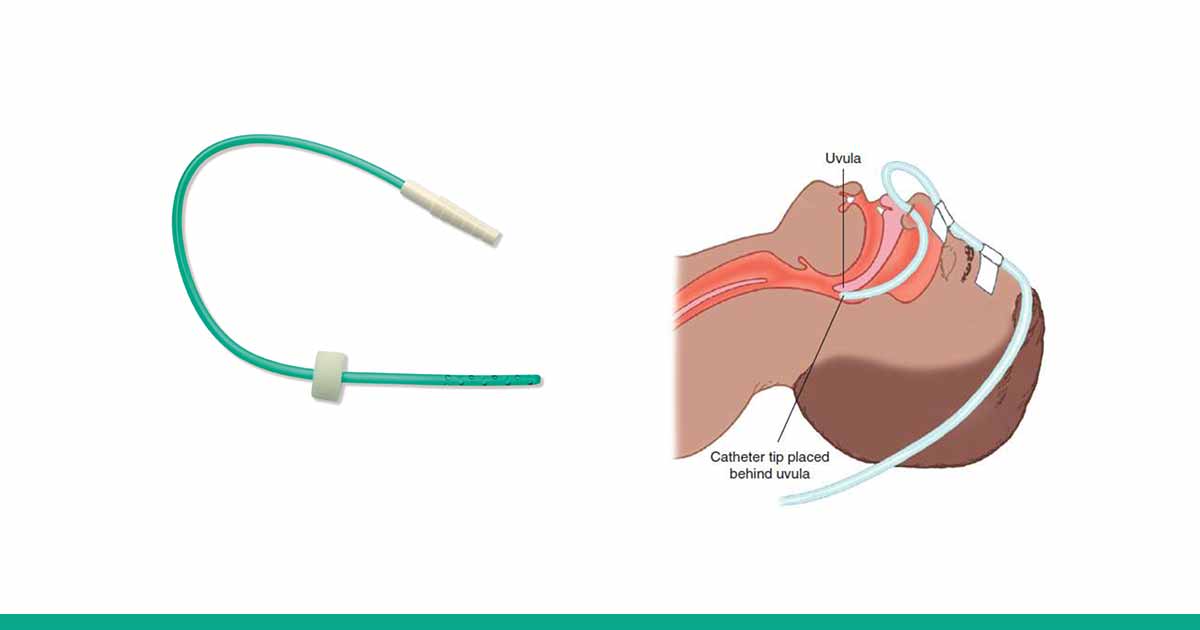A nasal catheter is a sterile, single lumen catheter. The flexible tube is usually lubricated with a water-soluble gel, and inserted into the anterior naris by a foam collar, just above the uvula.
The single use device is used to deliver supplemental oxygen to the nasopharynx. An oxygen flows of 2–3 L/min. It yields FiO2 of 35-40%.
The nasal oxygen catheter may be 40 cm long, with open distal ends, and many lateral eyes. The proximal part has a straight conical connector that should be connected to an oxygen connecting tube. The oxygen connecting tube links the nasal catheter to the oxygen source.
The catheter is not used when there is nasal mucosal tear, as there could be risk of surgical emphysema. Also, inserting the nasal oxygen catheter so deep could cause air swallowing and gastric distension.
A nasal oxygen catheter has no main advantage over nasal cannula, and it must be repositioned after every eight hours. The terms, nasal cannula and nasal catheter are now used interchangeably.
Nasal Cannula vs Nasal Catheter?
In a study by Weber et al., he compared nasal cannula and nasal catheter in the delivery of oxygen in young children with hypoxemia caused by acute lower respiratory tract infection in the Gambia. The study did not refute the existing evidence, obtained with far more reliable methods, that a nasopharyngeal catheter is substantially more effective in giving oxygen than are nasal prongs.
Both nasal cannula and nasal catheter are used in oxygen delivery to children with acute lower respiratory tract infections, especially in developing countries.
Features of a Nasal Catheter
Nasal oxygen catheter can come in different sizes such as 8, 10, 12, 14, 16, 18 Fr, with a length of 40 cm. It has features such as:
- PVC straight conical connector
- Oxygen connecting tube
References:
- https://indiachest.org/wp-content/uploads/2018/04/Oxygen-delivery-devices_Hemanth_Oct-2017.pdf
- https://www.jpeds.com/article/S0022-3476(96)70235-4/pdf
- https://pubmed.ncbi.nlm.nih.gov/7658266/












